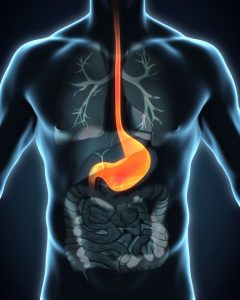When Is pH Monitoring Needed?
 A fluid’s pH level is its balance of acidic to alkaline content. Virtually any type of fluid can be checked for pH. For example, water is frequently analyzed for its pH balance before being used for growing certain types of plants.
A fluid’s pH level is its balance of acidic to alkaline content. Virtually any type of fluid can be checked for pH. For example, water is frequently analyzed for its pH balance before being used for growing certain types of plants.
Human blood also has a pH level. For people, pH balance is largely determined by diet. You can usually maintain a healthy pH level by limiting intake of acidic foods and drinking plenty of water, which has the effect of neutralizing acid.
People suffering from certain symptoms might need pH monitoring to get a diagnosis or plan treatment. With pH monitoring, your doctor can determine how acidic or alkaline your blood is. This can help you discover when stomach acid is traversing the body in ways it should not.
What Is pH monitoring?
Evaluating human pH levels is usually done through esophageal pH monitoring. This test can tell your doctor how often stomach acid enters your esophagus, which leads from the mouth all the way down to the stomach.
The Process
A thin tube is passed down to the stomach and then withdrawn into the esophagus. A specialized monitor detects the presence of stomach acid in the esophageal passage. The monitor remains outside of the digestive tract and can be worn on a strap.
For the next 24 hours, the patient will keep a diary of symptoms and might include details such as diet and activities associated with those symptoms. At the end of testing, you can get advice on mitigating symptoms and information on potential treatments.
Who Makes a Good Candidate?
Anyone who may be suffering from frequent heartburn or gastrointestinal acid reflux disease (GERD) should ask a doctor about esophageal pH monitoring. The test can help you to verify the presence and severity of GERD, allowing you to move forward with potential treatments.
Any otherwise healthy adult is a potential candidate for pH monitoring. However, it’s vital to talk to your doctor about any other conditions you’ve been diagnosed with or medications that you may be taking. It’s often necessary to adjust medications during the testing.
The Benefits of Monitoring pH
Esophageal pH monitoring can help to diagnose a spectrum of disorders affecting gastrointestinal function - dysphagia, esophageal scarring, GERD, heartburn, reflux esophagitis, and others. The principal benefit is to get information that will help accurately diagnose underlying issues so they can be treated. Depending on the results, it may be possible for certain patients to mitigate symptoms through changes in diet, exercise, and lifestyle.
Recovery Afterward
A brief feeling of gagging or slight nausea may occur as the tube used for pH testing is inserted into and removed from the esophagus. No other complications are expected in the usual course of this test. Virtually all regular activities can be pursued as normal. Since no invasive surgical techniques are used in the monitoring process, there is typically no recovery time.
Why Would Someone Need pH Monitoring?
Unexplained gastrointestinal symptoms can arise at virtually any time of life. Some of these may be caused by stress, while others are the result of damage or dysfunction somewhere within the intestines. Since many different problems can lead to similar recurring symptoms, pH monitoring provides a critical piece of the puzzle in determining the root cause of the issue.
Painful reflux of acid into the throat can cause serious problems over time. Often accompanied by gas, bloating, nausea, and other concerns, it may signal a serious problem.
If you are dealing with symptoms like these, contact Gramercy Park Digestive Disease Center for expert help.


